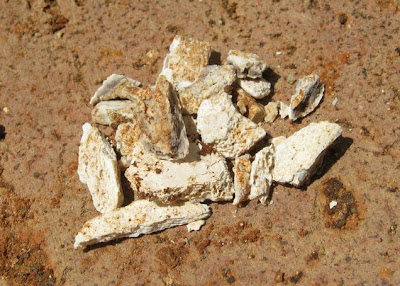A burial urn, believed to date from the Megalithic Era, was recently excavated at a construction site near Ramakkalmedu in the Idukki district.
The site, located at Thovalappady en route to Ramakkalmedu from Thookkupalam, is one of many Megalithic sites excavated in the district.
T. Rajesh, who led the excavation, said "it was the first time an in-depth technical study of such a burial was possible as the bone fragments find inside the urn could be carbon dated to reveal the period the urn belongs to."
"The find is clear evidence of a society which revered its dead and indicatesthat a prominent civilisation existed in the eastern hills of the district," he added.
The urn is about one metre in height and its rim has a diameter of about 12 inches. It was covered with a round shaped stone slab and two small pots and a bowl were placed nearby.
“The red and black pottery is remarkable as it illustrates the Dravidian expansion into southern India,'' Mr Rajesh said.
"It is the first time that human bones have been found in a burial urn and this biological element is very important because it will open the window for scientific analysis," he added.
Various Megalithic structures, including dolmens, table stones and burial urns, believed to date from between 1050 BC and AD 300, have been discovered at various locations in the eastern parts of the district.
It is believed that an administrative hierarchy existed in Keezhmalanadu, supported by settlements spread over the Western Ghats region.
Dr P. J. Cherian, director of the Kerala Council for Historical Research, told The Hindu that the Pattanam excavation had opened the door for further study of the valuable historical remains in the Idukki district.
"While a general chronological framework has been constructed," he said, "further study is required to determine the exact period to which the various historical remains belong."
“Burial urns and dolmens are mortuary remains of a civilisation which spread its roots to the interior regions of the district, and more serious studies into the complex architecture of the Megalithic era is required," he added.
He also said that while similar remains had been found in many areas, a complete historical map has yet to be established.
"Although the main elements of these remains appear to be quite similar, there are many variations that require in-depth analysis."
The Idukki district administration has drawn up a project ‘Discovering Idukki,' in its annual budget for 2011- '12 to protect the megalithic sites and initiate studies into them. It also plans to open a megalithic museum at the district headquarters in Painavu for collection and preservation of the historical remains excavated in the district.
Source: The
Archaeology News Network

No hay comentarios:
Publicar un comentario